Buying a Dovetail Saw
When buying a dovetail saw you need to ensure that it has good, resharpenable steel and has a strong back. Like tenon saws, these can be brass or steel-backed, the main difference is that the steel-backed saws are lighter. You also want to make sure it has 15 PPI or more (slightly smaller teeth) and has a comfortable wooden handle. Paul likes the turned (inline) handle for cutting dovetails, as found on the gent’s saw.
The 10″ 15-PPI Spear and Jackson dovetail saw (often labeled as a tenon saw) with the rosewood handle is a good value new option, although these might be harder to find secondhand they do sometimes come up on eBay. Another name to look out for secondhand is Henry Disston which also has a comfortable handle. Paul also recommends this Crown gents saw which is available in the US, a 10″ with 17 TPI.
Like with all saws, if you are not yet confident with sharpening them and you want one ready to go, Paul recommends buying a new one. Sometimes the new dovetail saws arrive over set, which will need correcting and some may also need further sharpening.
🇬🇧 We purchased this from Hurst for £20.99 with £3.50 delivery in January 2018. In our latest price check the price was £23.75*.
🇺🇸 If you are ordering from the US, we have found it on Amazon.com.
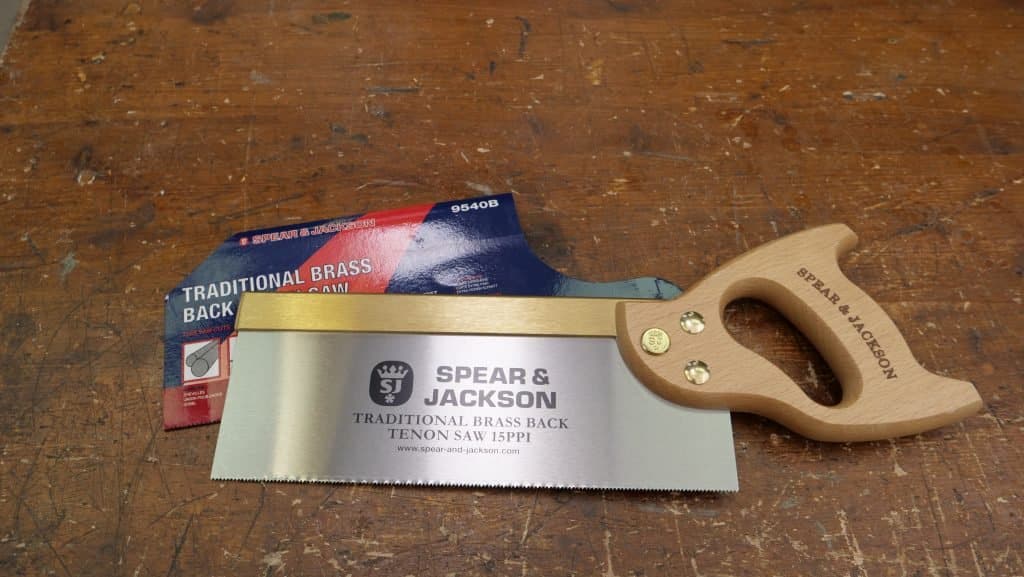
*Prices checked March 2024

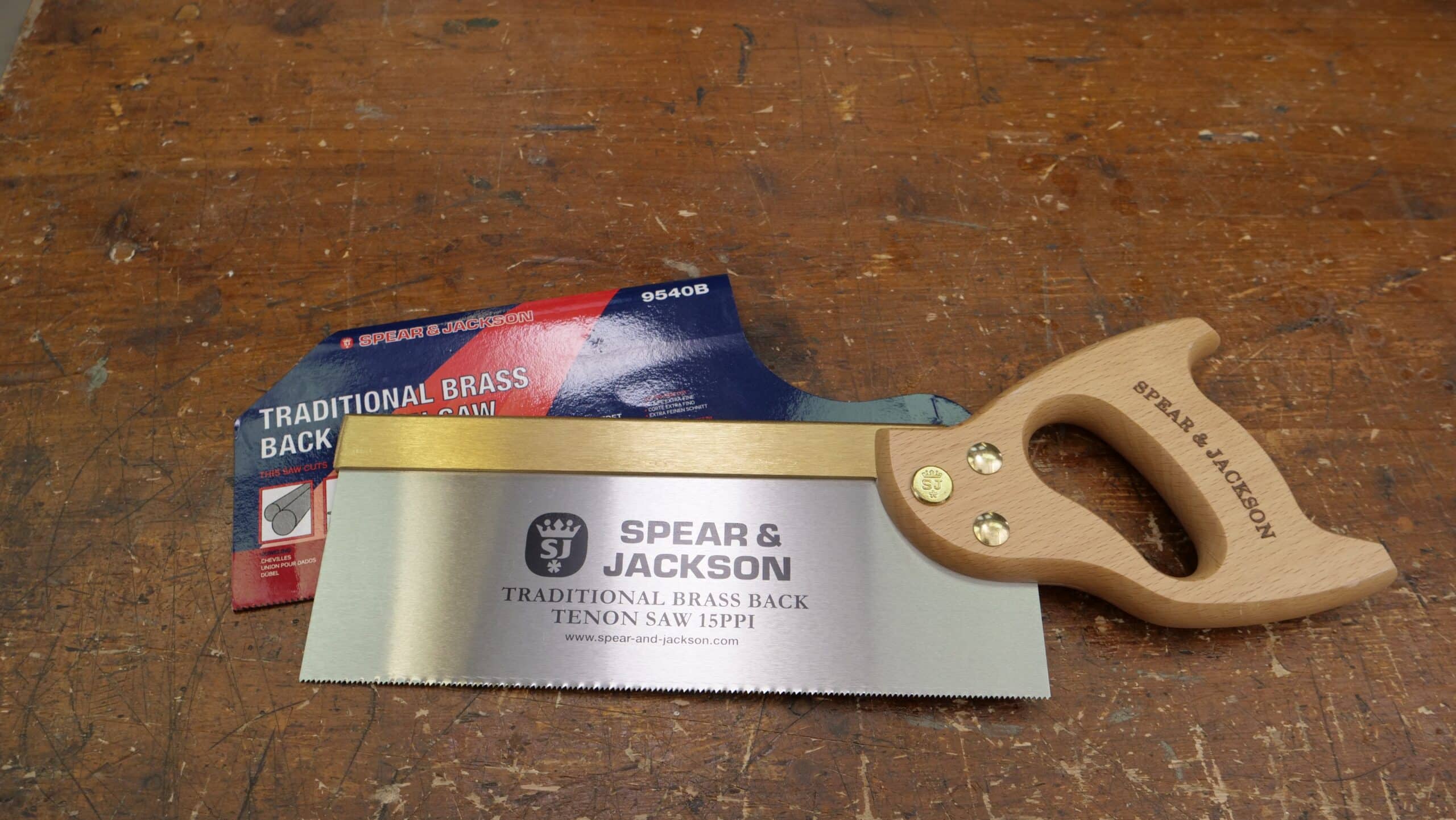
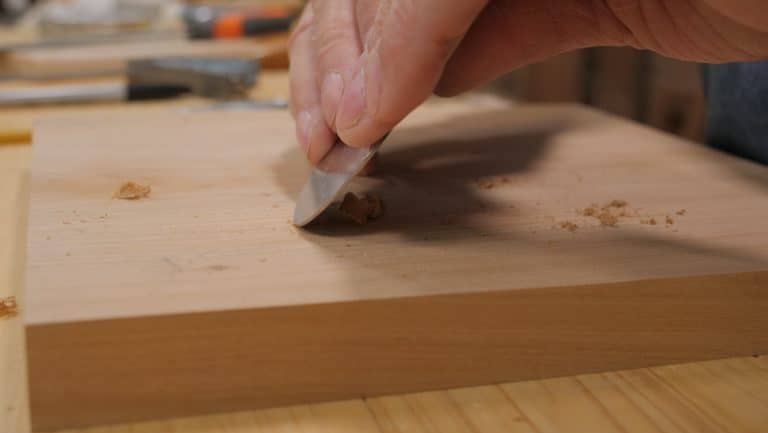

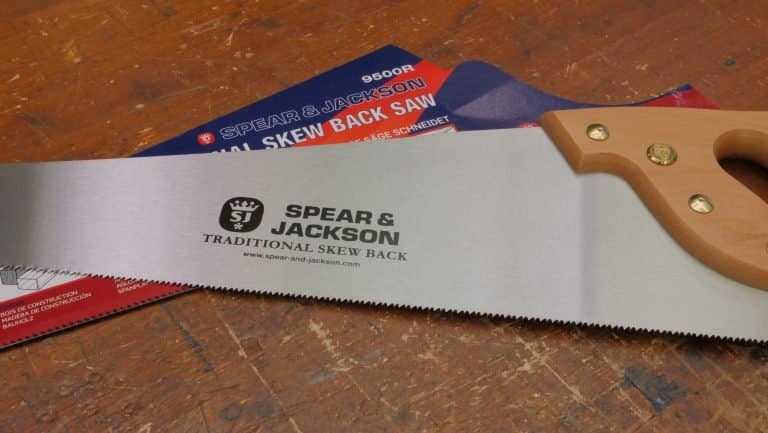
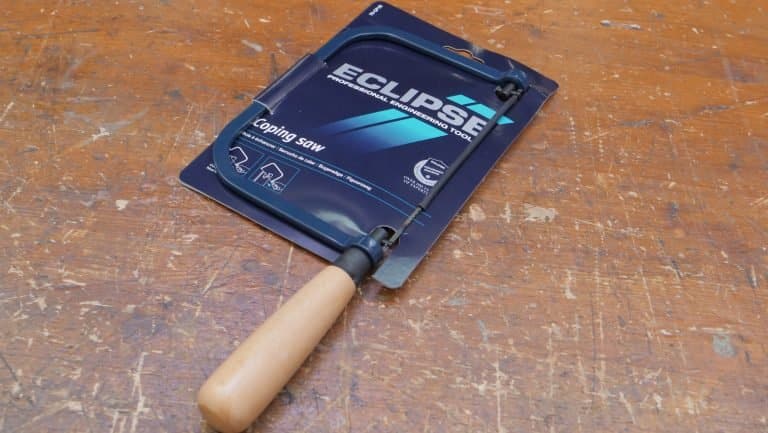
Sir,
I appreciate this new website for novices like myself. In America these saws are significantly more expensive(and very hard to get). Do you have a recommendation for new American woodworkers that are not yet confident enough to sharpen a second hand saw?
Thank you for your time and passion.
Hi Jacob,
Thanks for your comment.
Paul recommends the Crown 10″ 17 TPI Dovetail Saw which is available from Highland Woodworking. I have now added this into our guide above.
We are looking to add more accessible tool options for our US audience in the near future.
Kind Regards,
Izzy
I am glad to see this saw coming up here!
I bought two of them and both came with a strange set from the factory:
The first 4 teeth have no set.
The 5th is left, the 6th is right and then the 7th is in the middle (no set), 8th left, 9th middle, 10th right, 11th middle, etc….so it’s sort of a 3-teeth profile.
To get to the left-right profile I would have to bend some teeth over, which led to some broken teeth on a robert flynn saw I used to practice on.
Is there any way to correct the pattern “softly”
Did you see this pattern on any saw you bought?
Thanks for all you do!
David
Hi David,
The pattern you are describing is known as a raker tooth pattern, the straight tooth helps to remove waste from the middle of the saw kerf.
We would recommend straightening out the teeth using 2 hammers as seen in our sharpening a saw guide. You do risk breaking some of the teeth if the saw is particularly brittle. Unfortunately you cant tell until you’ve done it.
I hope this helps.
Kind Regards,
Izzy
I’m a little confused here. It says Paul likes the turned handles like on the gents saws. But the other recommendations and hos latest videos show the traditional handled saws he uses. I can get the Crown Gents saw locally or order the tenon saw you post here on Amazon. Thoughts?
Hi Steve,
I have passed your question on to Paul and below is his answer:
In my view, inline handles, as in gent’s saws, are very fine saws. I like them and I use them equally and I interchange between one and the other as regularly as I remember to so people will understand that either will work.
Kind Regards,
Izzy
Great! Thanks for clarifying. That makes sense as Paul likes to make sure its accessible to everyone. Also nice that I can support the local mom and pop wood/tool store. Thanks again, Happy New Year to all there!
Hello,
I’m in a dilemma, choosing between two S&J saws:
– A traditional tenon saw, 12 inches, 15 ppi: https://www.spear-and-jackson.com/products/hand-contractor-tools/woodworking-tools/woodsaws/spear-jackson-12305mm-x-15pts-traditional
– A professional (“dovetail”) saw, 12 inches, 15 ppi: https://www.spear-and-jackson.com/products/hand-contractor-tools/woodworking-tools/woodsaws/spear-jackson-10254mm-x-15pts-professional
I intend to use the saw for tenons and dovetails, which one would you recommend? Will the 12″ traditional tenon saw be good enough for dovetails?
Besides that, I intend to buy the S&J 22″, 10 ppi saw and to file it rip.
Thanks in advance,
Semir
Hi Semir,
Paul says:
It seems to me there is no difference between the two saws as they’re both 15PPI and the same length. It’s just a matter of preference.
Kind Regards,
Izzy
Thanks!
On the date that I write Spear and Jackson has modified a saw model 9540B replaced by the one that is given in link.
one saw has 10 “the other 12” the blade is shallower the handle is to be screwed instead of riveted.
they have certainly updated the saw.
but both are as Izzy says 15 tpi
Hi
Could you please clarify some details of the saws Paul uses regularly and that are pictured in the blog article:-
https://paulsellers.com/2017/11/saved-saw-perfect-teeth/
The saws pictured:
https://i0.wp.com/paulsellers.com/wp-content/uploads/2017/11/P1099657.jpg?resize=1748%2C1310&ssl=1
These are I understand
10″, 12″, 14″, and 16″ but could you clarify what the teeth per inch and type of cut of the teeth
10″ Rip cut ? 16ppi ?
12″ Rip cut ? 14ppi ?
14″ Rip cut ? 14ppi ?
16″ Rip cut 8ppi
many thanks
Hi Simon,
Paul says:
They are all 14 TPI except the smallest which is 16 TPI.
Kind Regards,
Izzy
Hi Izzy, thanks for getting back with an answer so quickly.
The ‘new’ addition 16″ is an 8ppi rip cut that’s for sure – Paul said so in the video in the blog post in the link I provided above.
You didn’t answer the type of cut of the 10, 12, and 14″ saws – all rip cut ?
thanks
Hi Simon,
Paul says:
Yes, all rip cut. I have no tenon saws sharpened for a crosscut. The teeth are so small you can rip and crosscut with the same saw.
Kind Regards,
Izzy
For information:
In the YouTube video
https://youtu.be/UA5DixEaaUo?t=79
Paul says that all his ‘tenon’ saws are rip cut.
(Though he also states that the 12″ and 14″ are 11 ppi which I’m guessing is a mistake and he should have said 14 ppi (?))
Hello,
I recently bought the traditional tenon Spear & Jackson saw, 12 inches, 15 ppi (new).
It has the “raker tooth pattern” mentionned above in the comments.
I don’t know if it’s me but I can’t even start the cut in pine. The teeth get stuck into the wood and won’t cut, even if I start with very gentle strokes.
What could I correct to get this saw working better ?
Thank you,
Francois
Hi Francois,
Paul says:
I would suggest filing down the first few teeth as seen in this video from 6:53 https://youtu.be/mP0DgxIb-xs?t=413
I would also question your thought patterns with regards to pine being an easy wood to cut in to, as opposed to a regular hardwood like cherry or walnut. These woods have much more consistent density and the teeth will work much more readily on hardwoods than pines and spruces, softwoods. The softwoods have two aspects to each growth ring, one is the early Spring and Summer growth which is exceptionally soft, Adjacent to the Autumn and Winter growth which is exceptionally hard. This means that the teeth press into the softer grain and grip into the harder grain making it much harder to get the kind of consistency you are looking for.
Kind Regards,
Izzy
Hello,
Could I just buy the Spear and Jackson saw and use it for both dovetails and tenons?
Many thanks,
Laurence.
Hi Laurence,
Yes you can.
Kind Regards,
Izzy
I just learned that Craftsmanstudio.com in the US is selling the Veritas Dovetail saw for $59.99… Great deal on a nice saw. I’m buying one come April.
Namaste, Jon in Easthampton MA
Dear Izzy,
Thank you in advance for your time.
I’ve been watching Paul’s videos and absolutely love them. I have learnt so much in such a short space of time.
I have several old panel and tenon/dovetail saws that I am reconditioning and am planning to re-file. However I’m struggling to decide on what PPI I should file to have a collection of sizes that a beginner would need.
Currently I’m thinking:
Tenon saw 12PPI rip cut
Dovetail saw 15-16PPI 10inch long rip cut
Tenon x-cut ? PPI
Dovetail x-cut ? PPI
Panel saws
Rip cut 20-22inch long ?8-10 PPI
X cut 20-22 inch long ??PPI
I also have two other panel saws that I am thinking if making into a rip and the other a cross cut, to give me a selection but but not sure what PPI I should do for each?
Do you have any advice that you might give in helping with my choices/decisions?
Many thanks
Charlie
Hi Charlie,
Paul says:
I don’t have any back saws sharpened for a crosscut with pinnacle teeth. 90% of saw work with back saws is rip cut. For crosscutting, shoulders etc, I just rely on the finer teeth of smaller back saws like dovetail or gents saws.
I do like a pinnacle toothed crosscut panel saw as well as a ripcut. 8ppi on ripcut and 10 on crosscut. I like a larger toothed rop with 6ppi for heavy work.
Kind Regards,
Izzy
Thank you that’s brilliant.
Thank you also for all your fabulous videos. I learnt so much and have made several pieces after watching you. Thank you again
Charlie
I have the same problem as David (https://commonwoodworking.com/buying-a-dovetail-saw/#comment-581),
I purchased the 10” 15-PPI Spear and Jackson dovetail saw and it came with a very heavy set raker tooth pattern. The saw does not cut at all. Did I get it right, that Paul recommends to remove the set completely with a hammer and than reset the saw with a normal pattern?
Hi,
Paul says:
Usually, all you need to do is take some of the set out. Place a hammer in the vise with the hammer face facing up. Place the saw on the hammer starting at one and gently tape the teeth as you move the saw along the hammer-face ‘anvil’. Flip over to the other side and do the same. This will remove some of the set and will likely give you the exact set you need through several sharpenings.
Izzy